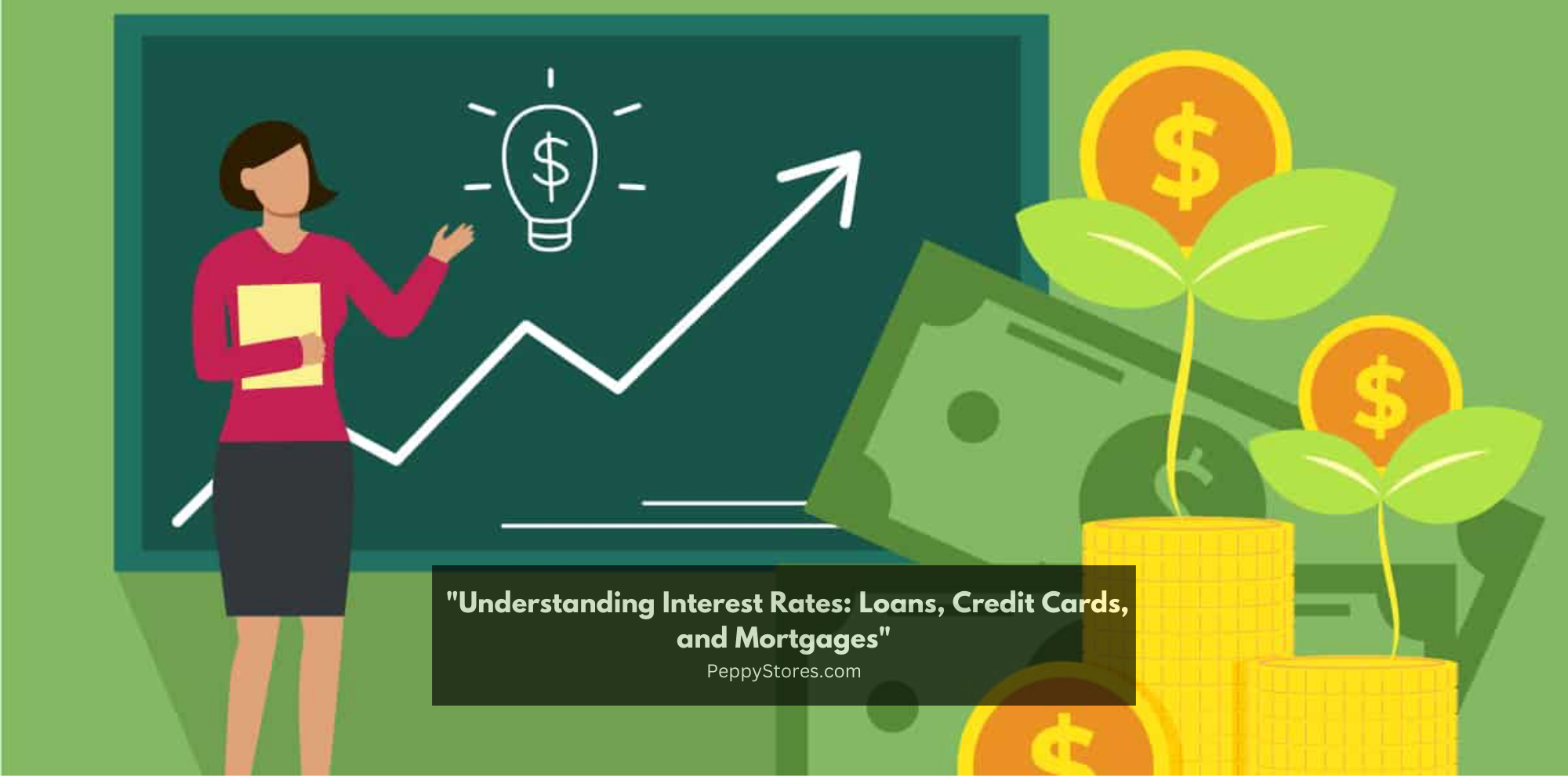Interest rates play a pivotal role in the world of personal finance, influencing everything from the cost of loans to the dynamics of credit card balances and mortgage payments. For individuals living in the USA, navigating the complexities of interest rates is crucial for making informed financial decisions. In this comprehensive guide, we will delve into the intricacies of interest rates, demystifying their impact on loans, credit cards, and mortgages to empower individuals in their financial journey.
Unraveling the Basics of Interest Rates
1. What Are Interest Rates?
At its core, an interest rate is the cost of borrowing money. It represents the percentage charged by a lender on the principal amount borrowed. Understanding the nuances of interest rates is fundamental for anyone seeking to manage debt, make strategic financial decisions, and build a solid financial foundation.
2. Types of Interest Rates:
Fixed Interest Rates: These remain constant throughout the life of the loan or credit agreement. Fixed rates provide predictability, making it easier for borrowers to budget for consistent monthly payments.
Variable or Adjustable Interest Rates: These can fluctuate based on changes in market conditions. While initial rates may be lower than fixed rates, there is a degree of uncertainty, as payments can increase if interest rates rise.
Interest Rates and Loans
1. Personal Loans:
Personal loans often come with fixed interest rates. When considering a personal loan, the interest rate significantly impacts the total cost of borrowing. Lower interest rates can lead to reduced overall repayment amounts, making it essential to shop around for the best rates.
2. Auto Loans:
Auto loans may have fixed or variable interest rates. Lower interest rates can result in more affordable monthly payments and decrease the total cost of the vehicle over the life of the loan. Factors influencing auto loan rates include credit score, loan term, and the age of the vehicle.
3. Student Loans:
Federal and private student loans may have fixed or variable interest rates. Federal student loans typically offer fixed rates, providing stability for borrowers. Private student loans may offer both fixed and variable options, with rates determined by the borrower’s creditworthiness.
4. Understanding APR:
The Annual Percentage Rate (APR) reflects the true cost of borrowing, incorporating not just the interest rate but also any fees or additional costs associated with the loan. When comparing loans, it’s crucial to consider the APR for a comprehensive understanding of the financial commitment.
Interest Rates and Credit Cards
1. Credit Card APR:
Credit cards often come with variable interest rates, and the APR can vary widely based on the cardholder’s creditworthiness. High APRs can lead to substantial interest charges, especially if card balances are not paid in full each month.
2. Introductory 0% APR Offers:
Some credit cards may offer introductory periods with 0% APR on purchases or balance transfers. While these promotions can be advantageous, it’s essential to understand the terms and the subsequent APR that will apply after the introductory period ends.
3. Credit Card Interest Calculation:
Unlike loans with fixed monthly payments, credit card interest is typically calculated on the average daily balance. Making only minimum payments can result in prolonged repayment periods and increased overall interest costs.
4. Impact of Credit Card Interest on Debt:
High credit card interest rates can lead to a cycle of debt if balances are not paid in full. Accumulating interest on unpaid balances makes it challenging to escape the burden of credit card debt, emphasizing the importance of responsible credit card use.
Interest Rates and Mortgages
1. Fixed-Rate Mortgages:
Fixed-rate mortgages have a set interest rate for the entire loan term, providing predictability in monthly payments. These are popular for individuals who prefer a stable, long-term financial commitment.
2. Adjustable-Rate Mortgages (ARMs):
ARMs come with variable interest rates that can change over time. Initial periods may offer lower rates, but borrowers should be prepared for potential increases in interest rates and monthly payments in subsequent years.
3. Factors Affecting Mortgage Rates:
Various factors influence mortgage rates, including economic conditions, inflation, and the borrower’s credit score. Monitoring these factors and understanding their impact can help individuals make informed decisions when entering the housing market.
4. Refinancing to Secure Lower Rates:
Individuals with existing mortgages may explore refinancing options to secure lower interest rates. Refinancing can lead to reduced monthly payments and significant savings over the life of the loan.
Managing Interest Rates Effectively
1. Maintain a Strong Credit Score:
A high credit score is a key factor in securing favorable interest rates. Regularly check your credit report for accuracy, and take steps to improve your credit score by making timely payments and managing your credit responsibly.
2. Comparison Shopping:
Whether securing a loan, choosing a credit card, or seeking a mortgage, comparison shopping is crucial. Explore offers from multiple lenders to ensure you obtain the most favorable terms and interest rates available.
3. Understanding Loan Terms:
Before committing to any financial product, carefully read and understand the terms, including interest rates, repayment schedules, and potential fees. A thorough understanding of the terms will empower you to make informed financial decisions.
4. Building a Solid Financial Foundation:
Establishing good financial habits, such as budgeting, saving, and avoiding unnecessary debt, contributes to a strong financial foundation. This, in turn, positions you to secure better interest rates and navigate the complexities of personal finance more effectively.
Conclusion
Understanding interest rates is a fundamental aspect of managing personal finances effectively. Whether dealing with loans, credit cards, or mortgages, the impact of interest rates on overall financial health cannot be overstated. By delving into the ABCs of interest rates, individuals in the USA can make informed decisions, optimize their borrowing strategies, and work towards achieving their financial goals. Remember, the key to financial success lies in knowledge, thoughtful planning, and a commitment to making choices that align with your long-term financial well-being.




